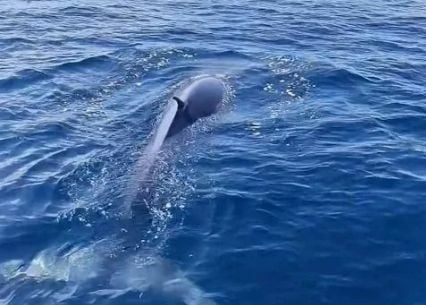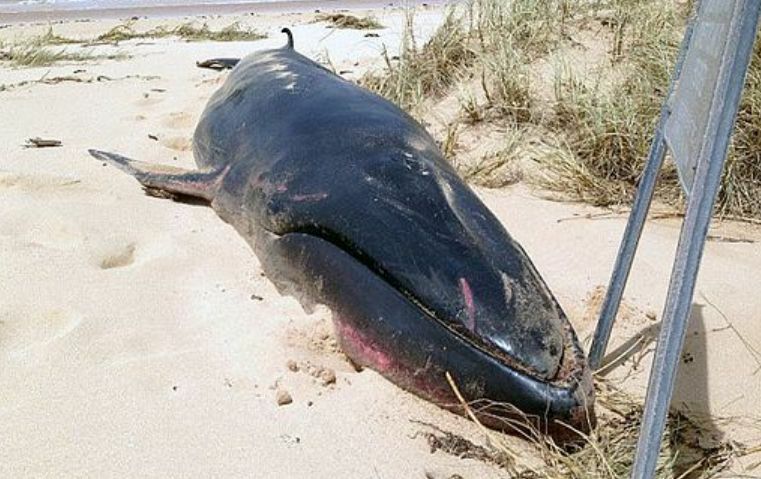Omura’s whale spotted in Thailand’s Surin Islands for first time

A sightseeing trip in Thailand’s Surin Islands took an unexpected turn when tourists spotted a rare Omura’s whale, a species only identified in the wild eight years ago. The sighting was confirmed by the national park officers at Mu Ko Surin National Park through an online post on Thursday, October 26.
The online post featured a video of the whale making an appearance above the water, to the delight of the Thai boat crew who cheered in excitement. The officers revealed that it was the first time an Omura’s whale had been seen in the national park’s waters.
The Omura’s whale is strikingly similar to the Bryde’s whale and is a protected species in Thailand. These whales can grow up to 20 metres in length and weigh up to 20 tonnes.
They are usually sighted alone or in pairs, grouping only for feeding purposes. The whales have been observed lunge-feeding on krill and small fish.
Habitually found in tropical to warm regions, Omura’s whales are predominantly spotted in the eastern part of the Indian Ocean and the western Pacific Ocean. However, sightings have also been confirmed in Thai waters, extending from Prachuap Khiri Khan to Songkhla in the Gulf of Thailand.
They have even been seen along the Andaman coast, with a group of four previously photographed near the Racha islands, south of Phuket.

The Omura’s whale was first described by Japanese scientists Shiro Wada, Masayuki Oishi, and Tadasu K. Yamada in 2003. They named the species in honour of the late Japanese cetologist Hideo Omura. However, it was not until 2015 that the first specimens were identified alive in the wild.
The International Union for Conservation of Nature (IUCN) currently lacks sufficient data to determine whether Omura’s whales are endangered, reported Phuket News.
Interestingly, Omura’s whales were previously mistaken for Bryde’s whales due to their similar appearance. However, scientists have now established that Omura’s whales are not related to the Bryde’s whales.
The dorsal fin of an Omura’s whale, although similar to that of a Bryde’s, is more curved and closer to the tail. Also, the head of an Omura’s whale features one convex ridge, while Bryde’s whales have three.
Physically, Omura’s whales have a light grey-black body, with a whitish to pink belly and about 80 to 90 light-coloured grooves under the chin that extend past the navel. The left side of the jaw is black, but the right side is faded or white. The jaw is filled with 180 to 210 pairs of short and wide teeth that can be white, yellow, or black.
Follow more of The Thaiger’s latest stories on our new Facebook page HERE.
Latest Thailand News
Follow The Thaiger on Google News:


























